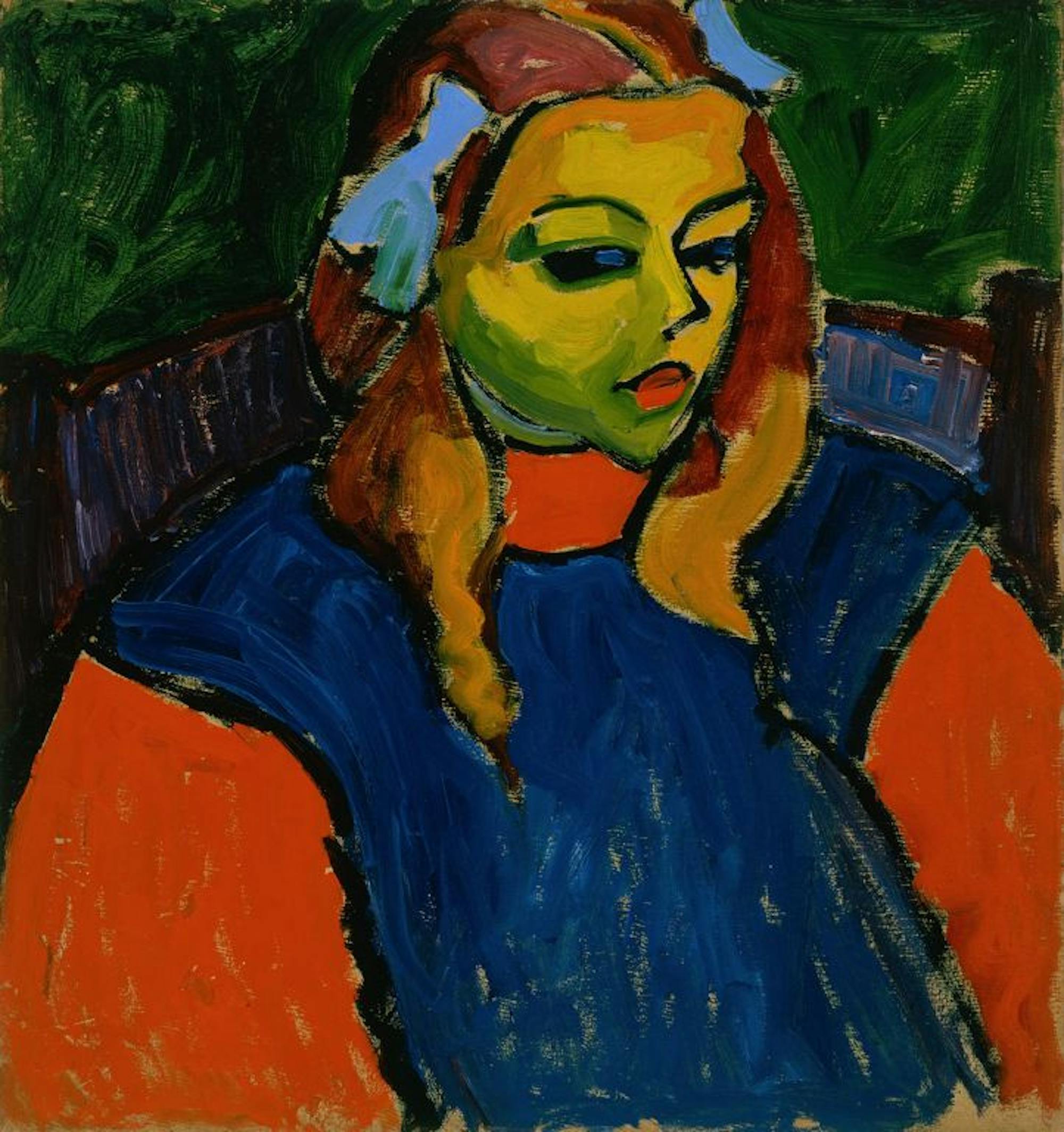The Neue Galerie is currently showcasing the first retrospective of Alexei Jawlensky, a Russian born Expressionist painter. The exhibition is the first full-museum retrospective of Jawlensky’s work in the United States. Jawlensky moved to Munich in 1896, where he was exposed to expressionist movements. The 75 paintings shown range from 1900-1937, and are arranged by time periods and themes. Jawlensky’s contemporaries consisted of Wassily Kandinsky, with whom he painted still lifes, as well as Paul Klee, August Macke and Franz Marc. Jawlensky knew many artists in the German expressionist movement Der Blaue Reiter, but he was not formally a member.
The most striking element of Jawlensky’s work is his use of color. The exhibition's wall descriptor states that his later paintings show “the artist’s deep spirituality and belief that art is a 'prayer spoken with color.'” Throughout his work, from his early still lifes to his later series "Meditations," one cannot help but be captivated by Jawlensky’s control of color, as well as the medium of paint. In his works such as “Girl with the Green Face” (1910), the human face is depicted using colors such as orange, yellow, green, blue and red. These are all colors that a human face has but Jawlensky heightens their intensity and the vibrancy of the colors overrides the figure’s naturalistic skin tone.
In his series "Mystical Heads," "Savior’s Faces" and "Abstract Heads" -- kept in the same room as “Girl with the Green Face” -- Jawlensky further abstracts the colors of the face into pure shapes of color. The face becomes entirely geometrical, consisting of lines, squares and semi-circles. However, it is still clear that what is presented to us is a face, although it has been rid of any of its naturalistic features. “Abstract Head Red Light” (1926) derives a certain vibrancy that could not emanate from any vaguely naturalistic figure.
Artists such as Paul Cézanne, Paul Gauguin, Henri Matisse and Vincent van Gogh heavily influenced these works. Although these works might bear some resemblance to works such as Matisse’s “Portrait of Madame Matisse (Green Stripe)”(1905), Jawlensky uses more colors and textures and ultimately reaches a level of abstraction that none of the impressionist and fauvist artists before him sought to achieve.
Jawlensky’s devotion to color can be noted in both his earlier series of landscapes and his very abstract series of small paintings entitled “Meditation.” The series created between 1914 and 1921 called “Variations” consisted of multiple still lifes from the artist’s window. Unlike impressionists before him, Jawlensky’s strokes are not small and painterly, rather his landscapes use large swatches of color to depict the natural world. In Jawlensky’s work, color becomes the form, and what the viewer is left with still resembles something naturalistic and familiar, but arrives at something much more complex and alive. Most landscapes can have a kind of stagnant feature, and it takes a true master of paint to create a still painting that encapsulates the life of the living realm it is trying to depict. In his late life, Jawlensky unfortunately suffered from severe arthritis, which limited his ability to paint. His smallest and last works resemble the “Abstract Faces” series, but Jawlensky uses even fewer shapes and colors. He rather focuses, or meditates as the title suggests, on the quality of the colors and the forms they create.
The Neue Galerie’s retrospective offers the most comprehensive collection of Jawlensky’s work ever displayed in the United States. It is hard to feel unmoved after leaving the retrospective, and it is even harder to forget it.
“Alexei Jawlensky” will be displayed at the Neue Galerie in New York City until May 29, 2017.
New York's Neue Galerie presents stunning retrospective on Alexei Jawlensky

Summary
Probably the best collection of Alexei Jawlensky's work, ever. Definitely a must-see if you're in New York.
4.5 Stars





